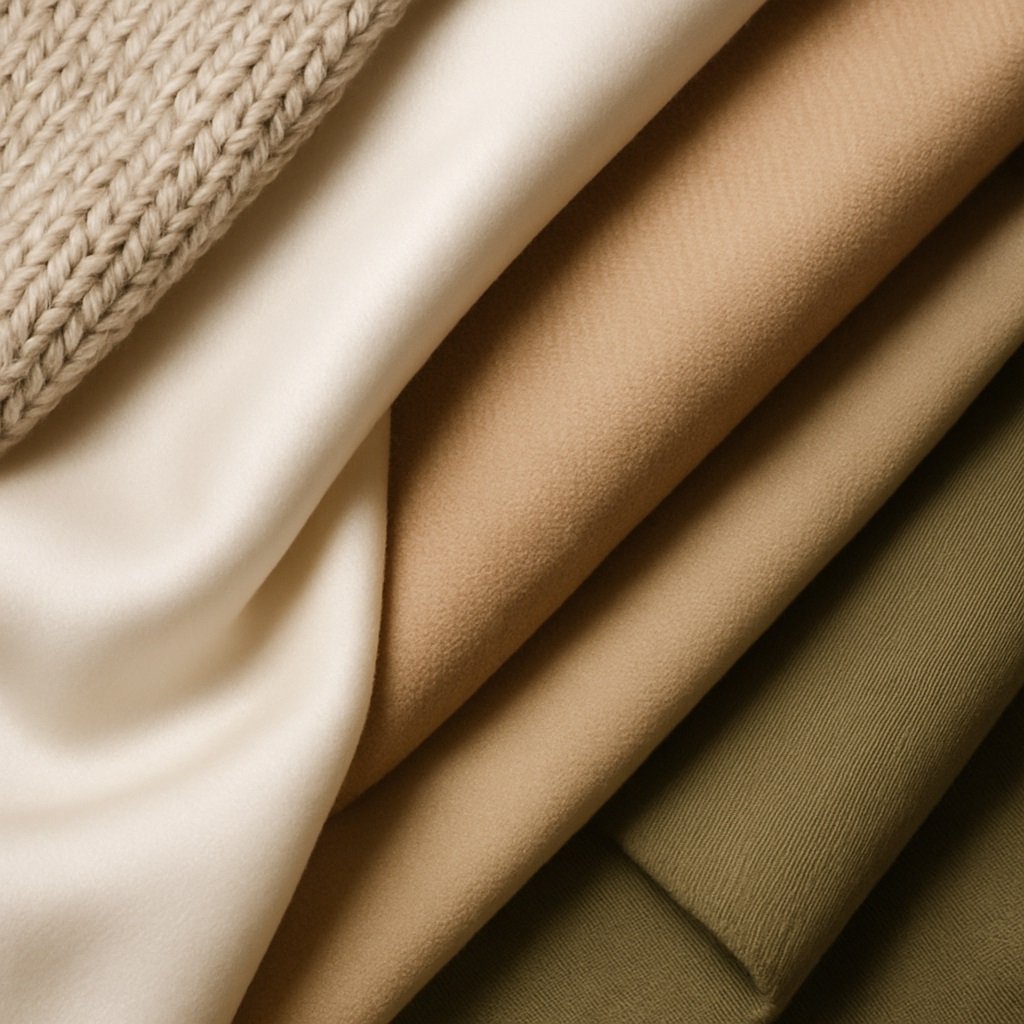There’s a common misconception that neutrals are boring—that they’re just the plain, uninspiring shades of black, white, and grey. If you’ve ever thought this way, I challenge you to reconsider. Neutrals are anything but monotonous; in fact, they form a world of subtlety, richness, and endless possibilities. Mastering the neutral palette doesn’t mean avoiding color altogether. Rather, it’s about creating depth and sophistication through a carefully curated blend of tones and textures. Let’s dive into the art of neutrals and explore how you can elevate your wardrobe with these understated hues.
Exploring the Neutral Spectrum
While black, white, and grey may dominate the conventional notion of neutrals, they’re only the starting point. Beyond them lies a vast world of “new neutrals” that can transform your wardrobe into something fresh, modern, and timeless.
Warm Tones: Comfort and Sophistication
The warm neutrals—think oatmeal, camel, cream, and sand—bring a sense of warmth, comfort, and refinement to your look. These hues evoke feelings of coziness and elegance, making them perfect for creating outfits that feel both inviting and polished.
- Oatmeal: A soft, earthy tone that adds warmth without being overpowering. Its subtlety allows it to pair beautifully with other neutrals or even bold accents.
- Camel: A classic, rich hue that instantly adds sophistication. It’s a color that’s both luxurious and versatile, working effortlessly in both casual and formal outfits.
- Cream: A refined, off-white shade that feels more inviting and softer than stark white. It’s perfect for layering and brings a sense of calmness to your outfit.
- Sand: A light, neutral beige that exudes elegance. It’s a perfect backdrop for adding textures and layering other tones for a multi-dimensional look.
These warm tones are incredibly versatile, giving you the ability to create outfits that feel grounded yet elevated.
Cool Tones: Calm and Professional
On the cooler side of the spectrum, we find hues like navy, olive, and various shades of grey. These tones are synonymous with calmness, rationality, and professionalism. They add a certain gravitas to your wardrobe without overwhelming the senses.
- Navy: A deep, classic blue that offers sophistication and depth. It’s more refined than black and offers a subtle richness that complements almost every color.
- Olive: A muted green with earthy undertones, olive brings an understated charm to your wardrobe. It’s perfect for creating grounded, yet contemporary outfits.
- Greys: Ranging from light dove grey to charcoal, greys offer a calm, neutral base that’s ideal for professional and casual looks alike. Lighter shades can bring lightness, while darker shades lend strength and authority.
These cooler hues are ideal for creating outfits that are polished, timeless, and effortlessly chic.
The Art of Pairing Neutrals
To master the art of neutrals, understanding the key principles of pairing them is essential. Neutral tones provide endless possibilities, but knowing how to combine them creates a level of sophistication that is both refined and powerful.
Tonal Dressing: Effortless Elegance
One of the most effective ways to wear neutrals is through tonal dressing—styling an outfit using different shades of the same color. This technique doesn’t just look chic; it also creates a sense of cohesion and flow, making the outfit appear both effortless and meticulously curated.
For example, a cream sweater paired with oatmeal trousers creates a harmonious, elevated look that feels fresh and modern. The slight variations in tone add depth without breaking the subtlety of the color palette. This technique works across all neutral hues—whether you’re layering shades of camel, grey, or olive, tonal dressing exudes sophistication and ease.
Mixing Textures: Adding Interest
While neutrals are about subtlety, that doesn’t mean they can’t be exciting. The key to making neutrals interesting is through the mix of textures. Playing with textures can bring a whole new dimension to your outfit, even when the color palette remains neutral.
For instance, imagine pairing a smooth silk blouse with a textured wool coat. The contrast between the soft, reflective silk and the rugged, cozy wool brings a sophisticated balance of light and depth. Alternatively, combining a soft knit sweater with structured denim trousers creates a perfect juxtaposition of comfort and sharpness. It’s this texture mixing that makes neutral outfits come alive, providing tactile interest while maintaining an overall sense of refinement.
Conclusion
Mastering the neutral palette is not about abandoning color; it’s about learning to express yourself with more subtlety, depth, and elegance. Neutral colors offer an incredible range of possibilities—they provide a refined, timeless way to dress that is both versatile and sophisticated. By embracing the art of tonal dressing and mixing textures, you can create outfits that are uniquely yours—instantly stylish, quietly confident, and deeply expressive.
In the world of fashion, true style isn’t about making loud statements. It’s about finding the quiet power of color and texture, and using them to express the best version of yourself. So, the next time you find yourself reaching for something bold, remember: sometimes, the most powerful statement is one that speaks softly.
